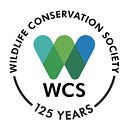3-Sentence Science
The Inside Story of Shorebird Guts
October 4, 2019
Each year, Wildlife Conservation Society scientists publish more than 300 peer-reviewed studies and papers. “WCS 3-Sentence Science” is a regular tip-sheet — in bite sized helpings — of some of this published work.
Here we present work by WCS Beringia’s Rebecca McGuire on gut bacteria in shorebird species.
- Researchers looked at gut microbiota — which can have important effects of host health — of eight shorebird species at breeding sites in the Arctic and Subarctic of North America.
- They found that breeding location was the main driver of variation in gut microbiota of breeding shorebirds, followed by shorebird host species, and sampling year; but most variation remained unexplained.
- The study is the first to highlight the potential importance of local environment as a driver of gut microbiota composition in wild, migratory birds under natural conditions.
Study and Journal: “Composition and drivers of gut microbial communities in Arctic-breeding shorebirds” from Frontiers in Microbiology
WCS Co-Author(s): Rebecca McGuire, WCS Beringia Program
For more information, contact: Stephen Sautner, 718–220–3682, ssautner@wcs.org.
